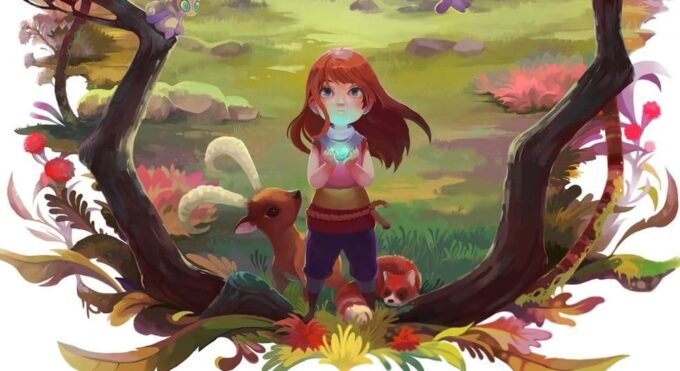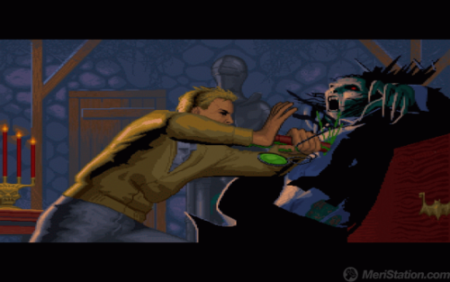Every once in a while those of us that constantly look for something new and refreshing are sometimes bothered by the fact that there are, unfortunately, many games that feel familiar once you finally get into the meat of things when, at a glance and on the surface, a promise to deliver something new was either unfulfilled or had untapped potential. Many of us also tend to stick to the genres we like and play the games within them, without giving genres that you’ve neither tried or maybe played the wrong type of game before on a chance to delve into something new and maybe find something that could surprisingly blow you away. Yonder is one of those games that mixes a bunch of things I love but also don’t really lean towards, and somehow combines them all to make a fun, memorable, vivid, and relaxing experience that’s easy to recommend at its humble price point, given all of the things, while simple, you can do in the game and explore.

Yonder: The Cloud Catcher Chronicles has you playing as an explorer who gets shipwrecked along with their crew on the land of Gemea, an unfamiliar and uncharted territory for everyone who ends up there. After waking up, your crew is nowhere to be found, and as you escape the cavern you find yourself in, the player is then greeted to a beautiful, vibrant world in which there are towns, villages, a ton of wildlife, mystical creatures known as sprites that help you along your journey, and much more. Yonder provides dynamic weather by putting players in an everlasting 24 hour clock that loops and adds days to the player’s overall playtime, while changing seasons as the days go by like they would in the real world. Though the added layer of seasons and dynamic weather don’t necessarily change the game by any means or spawn anything new, it does bring the land of Gemea to life further by giving it a realistic and vibrant change of color as the seasons pass by, the wind blows, and snows and rains accordingly. You can see the character shiver in the winter as it snows and the trees turn white, adding more depth to the overall atmosphere. The nice thing is is that, unlike some other games that have simulator elements like Yonder, it doesn’t punish the player or become tedious at times to keep up with certain tasks like taking care of your farm or making some places inaccessible due to weather conditions. This adds another layer of relaxation to Yonder by simply providing a more animated world as the player goes as their own place instead of hindering the experience like, for me, so many similar games in the genre tend to do. It’s because of this I lose interest, but Yonder allows the player to thankfully go at their own place and explore without jeopardizing any kind of connection or immersion that sinking frustration can sometimes ruin.

Everything about Yonder is minimal and straightforward without feeling like it’s missing any key features. Though sometimes the menu’s UI and management system feels like it’s set up to be a mobile game – if not a release in the future – it’s easy to navigate despite its lack of inspiration, but this is really the only place where Yonder seems lazy, for lack of a better word, as the art direction, colors, and design of everything else comes together as a whole in a way that feels complete and welcoming. The music that lends itself to Yonder keeps up with the minimal theme as it plays intermittently and for short times, as most sounds eminating from the game will be ambience and the overall biome of Gemea singing and bringing itself to life. As you traverse through Gemea, you’ll be given tasks by many of those that call Gemea home to help you get familiar with the locals and get you all the essentials you’ll need to continue on. While many of these will mainly be sidequests, they still feel very much necessary to your adventure as it’ll help you gather equipment and stumble on sprites to help you along the way and get rid of the Murk – a darkness that plagues various parts of Gemea that can only be cleansed by the sprites you acquire.

What’s most interesting in the way that Yonder is designed is that – just like elements in Breath of the Wild, Dragon Quest Builders, and other adventure and simulator games – it goes at your own pace, and with the non-linear direction it has as well as the exploratory nature of it, everyone will find and play it differently and can spend either no time at all or vast amounts. Aiming to go through the main story itself probably will take anywhere between 5 and 8 hours depending on proficiency, but those looking to take their time, explore, and possibly even collect and accomplish everything the game has to offer will be looking at well over 30 hours of content. I’ve played Yonder minutes before I’ve had to go to work, a bit before I’ve had to go to bed, and dedicated an entire lazy day to it, and Yonder plays along with me, suitable for just about any time of day and anyone’s schedule. It reminds me very much of Breath of the Wild in that regard, in that it’s an easy pick up and play that’s fun and sticks with you.

There are some unfortunate technical issues that Yonder: The Cloud Catcher Chronicles suffers from, however. Sometimes when there’s a lot of vegetation on screen or weather conditions get rather heavy, the game can dip significantly and go from a fluid 60fps to hovering around 40fps. It can get a little bothersome from time to time as you traverse through the more populated locations, and I’m really hoping a patch can come out soon for Yonder that increases stability and performance, because, while infrequent, it does to Yonder a disservice since it’s pretty to look at and fun to play and explore. Sections where the game chugs get irksome, especially those that are familiar with technical performance in video games. I even had one instance where the game crashed on me after fifteen straight minutes of frame drops and odd lag, granted I’ve been playing well over 20 hours at this point, but it’s still something to keep in mind for long play-sessions and when things start to chug along during a playthrough. There’s also an odd thing of sometimes when you’re attempting to jump forward on any type of slanted geometry, you’ll get repelled backwards for some reason. This can get annoying sometimes when trying to reach high places.

Overall Yonder: The Cloud Catcher Chronicles provides a wonderful experience to play through and a world to discover that Prideful Sloth has so elegantly put together. It perfectly combines so many great aspects of the greats in each respective genre and makes it a joy to uncover and play. Even for those that may not even like simulators like Harvest Moon and Stardew Valley but appreciate adventures like Breath of the Wild, RIME, Lili Child of Geos, and the like – or even vice versa! – will have something to love and appreciate here. Yonder: The Cloud Catcher Chronicles oddly yet seamlessly blends the best of Indie games and AAA development and finds that sweet spot right in the middle to make something that is unique, memorable, and worth having in your library.

Pros:
– A beautiful world that’s as relaxing as it is fun to explore and uncover hidden secrets
– The option to customize your character to your liking is nice, especially since the game doesn’t necessarily provide anything that has stats associated with it, so you can use just about any item and look any way you want without sacrificing anything like speed, endurance, inventory limits, etc.
– The “go at your own pace” nature of Yonder is rather fantastic and is reminiscent of the likes of Fez, where it’s great to just run around, solve puzzles, and find things without using any guide or the internet to help you out. Everything feels right and logical, so it’s not necessary to go about using a guide anyways, as you’ll figure out most things eventually.
– There are insanely cute cats hidden all over Gemea to find, love, and cuddle with
Cons:
– The compass which helps guide players to the next objective can sometimes feel a little useless as it simply points to the quest giver rather than actual destinations, but Yonder’s theme of exploration and wonderment actually makes this fault not as bad as it could be, as it’s best that players run around and find things as they go rather than take things in a linear fashion
– The camera, for whatever reason, constantly feels like it’s tilting rather than directly focusing on the player, so it can cause some weird strains on the eyes or you’ll find yourself tilting your head along with the camera to straighten things out
– Though fluid most of the time, there are occasional frame drops that hinder overall performance and may sometimes lead to crashes.
A massive thank you to Prideful Sloth for sending us a review copy of Yonder: The Cloud Catcher Chronicles!


